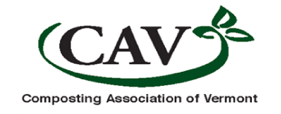Resources for farmers getting started with food scrap composting.
The below sections have a combination of videos, podcasts, suggested activities, tip sheets, and other tools to guide you.
Toolkit Table of Contents
-
-
Identifying partners
Building relationships
Informational interviews
Understanding & addressing the “readiness gap”
-
Getting started
Understanding regulations (VT & NH)
Asset mapping exercise
Communicating with your community
Now what…?
Record keeping & recipe
Iterating
On-going communication with your community
-
Details coming
Getting started
In this section you’ll find information about all the different pieces of a setting up compost system, from regulations to feedstock sourcing to understanding different system choices and deciding which is best for your farm. We also discuss how to determine what feedstocks to accept, define what “community-oriented composting” means to you, as well as communication and outreach strategies for establishing a successful system.
Understanding regulations
Here you’ll find general guidelines, applicable to all locations, as well as recorded conversations with regulators in Vermont and New Hampshire. Here you’ll find general guidelines, applicable to all locations, as well as recorded conversations with regulators in Vermont and New Hampshire.
Asset mapping activity, or… What resources do you have access to?
In this section we cover the basics of compost recipes so you’ll have context for determining potential feedstock volume. We then move into an activity to help you identify your current assets (like tools, equipment, established communities such as CSA members, etc.) and brainstorm where to source feedstocks (nitrogen and carbon materials), building materials, buckets, and more. Talking with your community to gauge interest in bringing you food scraps is an important step! [coming soon]
Choosing the right compost system for your farm
Having an idea of the resources you have access to, and some scale of volume of material that you hope to compost, helps identify the right system for your farm. In this section we introduce different compost systems and discuss advantages and disadvantages based on people power vs. mechanized power (like a tractor), space, and siting and volume considerations. [coming soon]
Inviting your community to participate
At this point, you already have a sense of who in your community is interested in bringing you food scraps, manure, bedding, leaves, and other feedstocks, and you should already have the compost system in place. Now’s the time to think about how you’ll collect or receive your compost feedstocks, and to develop clear communication with your community. [coming soon]





